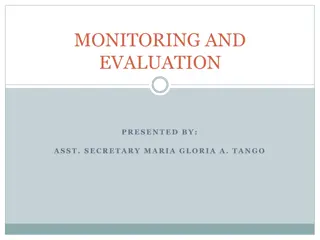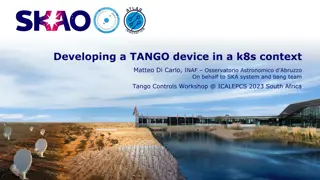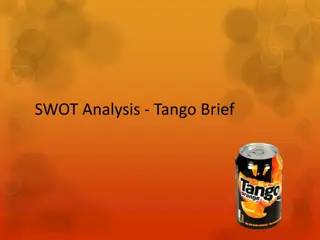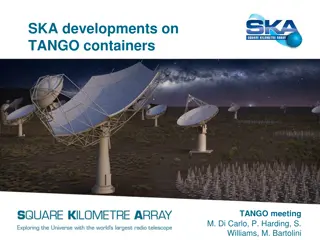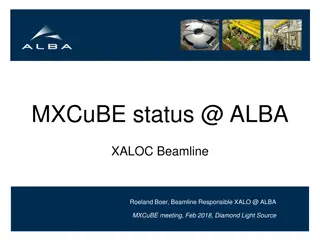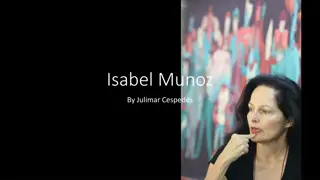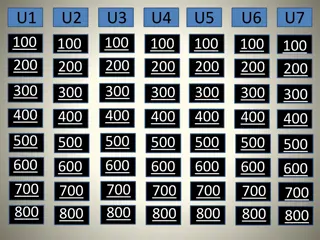
Astor Piazzolla's Histoire du Tango: Nuevo Tango and Musical Elements
Explore Astor Piazzolla's Histoire du Tango, focusing on Nuevo Tango, Arrastre, 3-2-2 Rhythm, Milonga, and Bordel 1900. Learn about Piazzolla's innovative musical elements, rhythmic styles, and historical influences in the evolution of tango music.
Download Presentation

Please find below an Image/Link to download the presentation.
The content on the website is provided AS IS for your information and personal use only. It may not be sold, licensed, or shared on other websites without obtaining consent from the author. If you encounter any issues during the download, it is possible that the publisher has removed the file from their server.
You are allowed to download the files provided on this website for personal or commercial use, subject to the condition that they are used lawfully. All files are the property of their respective owners.
The content on the website is provided AS IS for your information and personal use only. It may not be sold, licensed, or shared on other websites without obtaining consent from the author.
E N D
Presentation Transcript
A GLANCE AT ASTOR PIAZZOLLA S HISTOIRE DU TANGO Lizzie Ritter HNRS 4990
ASTOR PIAZZOLLA (1921-1992) o Argentinian composer and bandoneon player o Known for: His distinctive brand of tango called nuevo tango Formed two music groups: Octeto Buenos Aires and Quinteto Nuevo Tango, which performed at his own club, Jamaica Composed over 750 works including many tango pieces and a concerto for bandoneon
NUEVO TANGO o Created by Piazzolla in the 1950s Translates to new tango Initially met with resistance until the 1980s o Musical elements Chromaticism Dissonance Elements of Jazz New instrumentation o Within the piece: mm. 19- mm. 23 (chromaticism)
ARRASTRE o Arrastrar: to drag o Gives the tango a swing and sensual feel o Three types: Glissando line Appoggiatura 16th note chromatic upbeat o Within the piece: mm. 39 in flute with pick-up Marimba transition in m. 47
3-2-2 RHYTHM o 1. Three eighth/quarter note length 2. Three eighth/quarter note length 3. Two eighth/quarter note length o Traditional Argentine musical concept and one of Piazzolla s signature rhythms Within the piece: mm. 89- mm. 94 mm. 14- mm. 16 (accents in flute)
MILONGA o A form of the tango which had a faster tempo in duple meter, but created a relaxation in the bodies of dancers and performers o A common rhythm in the milonga was a dotted eighth- sixteenth note rhythm in duple meter o Within the piece: mm. 25-26 (in the marimba)
BORDEL 1900 o Piazzolla s Histoire Du Tango organized the four movements in historical order Going from 1900 to the present o First movement: the origin of the tango o Set in an early 20th century bordello/brothel o In duple meter (2 beats per measure) like most tangos during this time o Written to resemble flirtatious and sensual dancing Rubato elements in the flute and marimba Fast double-tongued staccato figures in the flute Milonga rhythm
CAF 1930 o Second Movement: for listening only o Around the 1930 s, the emphasis on the tango dance decreased and the focus became on the music itself o Romantic, slow, sultry, lyrical, somber o Piazzolla gives the performers many ad libitum sections to allow freedom for tempo changes and to create their own interpretation
NIGHTCLUB 1960 o Third movement: Argentine and Brazilian fusion o A new transformation of the tango: a combination of Argentine tango with the Brazilian bossa nova (translates to new trend ) o Performed at nightclubs in Buenos Aires o Includes flashy elements of first movement and slower elements from the second movement
CONCERT DAUJOURDHUI o Fourth movement: modern-day concert o Translates to concert of today o Intended for listening use above all else o This movement was Piazzolla s way of showing the direction tango was headed and the future of it o Not completely tonal and includes chromatic and jazz elements with displaced accents
Taken by Patrick Zachmann Lizzie Ritter HNRS 4990
Lizzie Ritter HNRS 4990


